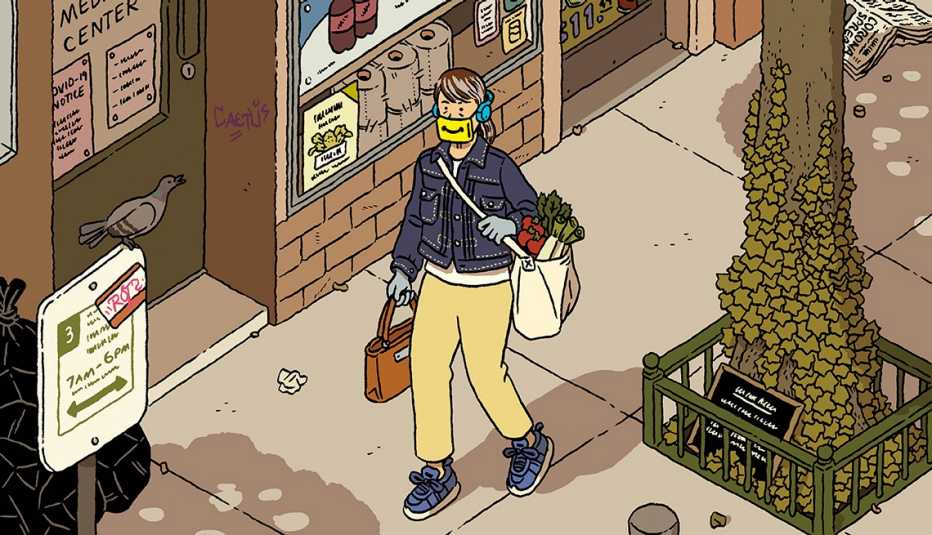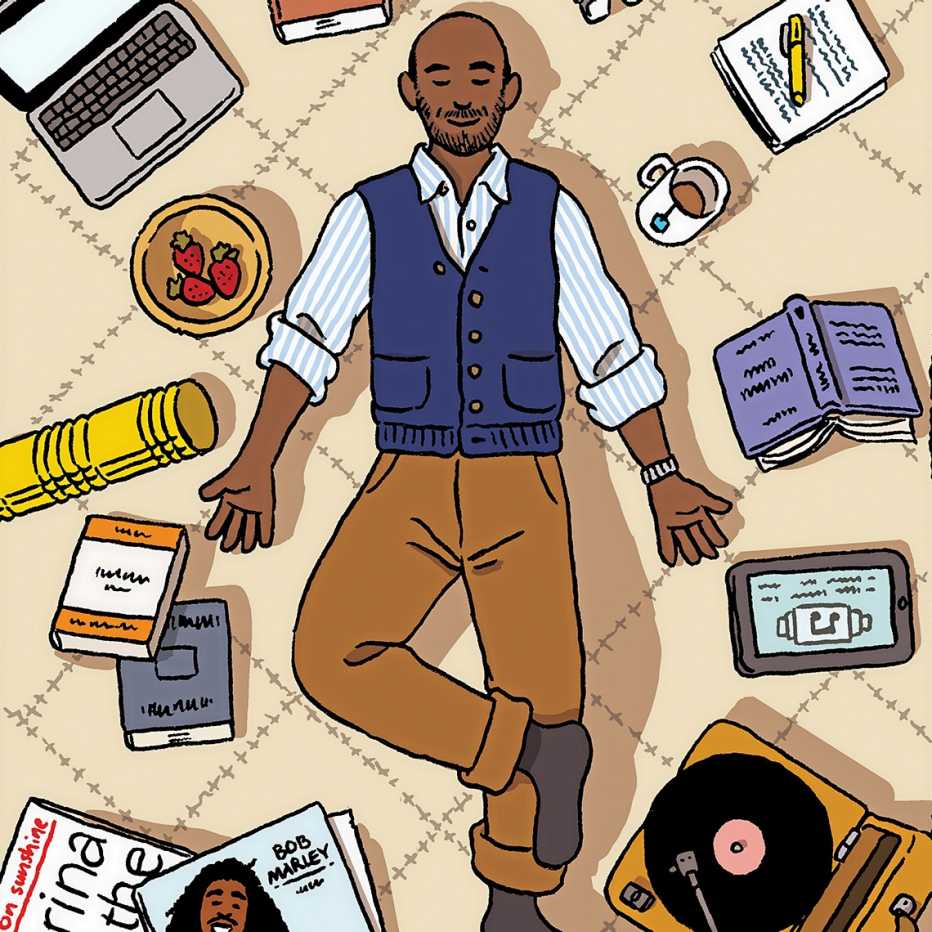Staying Fit


In the short list of songs that have brought the world joy, you'd be hard-pressed to top the Beatles’ “Here Comes the Sun,” with its lilting melody and deeply hopeful lyrics ("the smiles returning to the faces"; “I feel that ice is slowly melting").
No wonder that hospitals played it repeatedly over their public-address systems this spring as an auditory balm in some of the most stress-filled, soul-scorching places on the planet: the intensive care units overflowing with COVID-19 patients struggling to stay alive.


AARP Membership— $12 for your first year when you sign up for Automatic Renewal
Get instant access to members-only products and hundreds of discounts, a free second membership, and a subscription to AARP the Magazine.
At Lenox Hill Hospital in New York City, the song started up every time a coronavirus patient was discharged or recovered enough to breathe without the help of a ventilator. “Everyone in the hospital is under tremendous pressure,” says pulmonologist Steven Feinsilver, M.D., who has been caring for non-COVID-19 lung cases to free his colleagues to treat those with coronavirus. “Especially for those I see on the front lines of critical care, it's like a war zone here. The work is relentless. To hear this song on the loudspeaker is brilliant. It's just what people need, a reminder that patients are recovering. You feel good for a moment."
Feeling good may be the last thing on your mind as the coronavirus pandemic grinds into its sixth month in America. As we struggle to revive after arguably one of the world's worst health and economic calamities, is even talking about happiness self-absorbed and inappropriate?
Quite the contrary, countless researchers say. Pursuing happiness and, more importantly, finding it, matters more during dark times, says Laurie Santos, a professor of psychology at Yale University. “Happiness gives us the resilience to get through. This is a challenging time because it's both a physical and mental health crisis. We need to focus on happiness more now, not less."
The emotional lift provided by that Beatles song shouldn't be underestimated, notes Lenox Hill nurse manager Amanda Griffiths. The song played some 20 times on a single day, Griffiths recalls, and each repetition made her feel better. “It was an overwhelming sense of, wow, we're making a difference. I got very teary-eyed."
Clearly, the kind of happiness that matters in tough times has nothing to do with birthday hats or smiley faces. “This isn't delusional Hollywood glee and delight,” says psychologist Maria Sirois, author of A Short Course in Happiness After Loss. "The happiness that helps in great difficulty is realistic. It recognizes fears and anxieties. It looks for meaning. It nourishes and sustains us."
To better understand happiness and its role in hard times, AARP asked me to speak with the full spectrum of researchers and doctors focused on the topic to find out the deeper truths of joy. Here is what they want you to know.
Lesson 1: Happiness is possible in dark hours
Happiness Rx: Play Some Music
In mid-March, when stay-at-home orders were starting to take root, two kids in Columbus, Ohio, came up with a simple way to help a neighbor through the isolation. Taran Tien, 9, and sister Calliope, 6, carried their cellos to the front porch of Helena Schlam and played an impromptu concert for the 78-year-old Mozart fan. “It was delightful,” Schlam says. “Music is a comfort to me."
Indeed, in difficult times music can help relieve our mental anguish. “It's almost like an aspirin. You have a back pain, that gives you a little relief,” says Andy Tubman, chief of therapeutics for Musical Health Technologies, whose SingFit products guide people with dementia through singing exercises. “Music can be a healthy distraction in that sense."
AARP and the Global Council on Brain Health (GCBH) plan to release a report on June 21, World Music Day, on how music affects the brain. “People who study the brain have shown that listening to music you enjoy can cause a release of dopamine, a chemical that increases feelings of happiness,” says Sarah Lenz Lock, AARP's senior vice president of Policy & Brain Health and GCBH executive director.
Songs of empowerment also bubble up in troubled times. During the pandemic, songwriter Nick Lowe, 71, performed his anthem “(What's So Funny ‘Bout) Peace, Love & Understanding,” among other tunes, in virtual shows from his home. “It's a brand-new experience to me, to sing to a phone,” he says. “But when people see a musician sitting at home and not freaking out, I suppose that cheers people up."
To help, AARP has compiled a Spotify playlist, Songs of Hope and Happiness.


In the wake of a life-shattering crisis or global disaster, something surprisingly positive often happens. Two months after the World Trade Center terrorist attacks in 2001, a University of Pennsylvania survey of over 4,000 Americans found that they felt more gratitude, hope, kindness and love than they did before 9/11. And the effect wasn't transitory. In a three-year State University of New York at Buffalo study of 1,382 American adults, 58 percent said they continued to see positive consequences emerge from the attacks.
They weren't hiding their heads in the sand or pretending the disaster hadn't happened. A study by psychology professor Barbara Fredrickson, now at the University of North Carolina at Chapel Hill, found that students acknowledged the great despair, anger and fear they felt after 9/11, but some also were buoyed by what Fredrickson calls the “ordinary magic” of fleeting positive emotions, such as those sparked recently in hospital patients hearing “Here Comes the Sun.”
“Finding positive meaning may be the most powerful leverage point for cultivating positive emotions during times of crisis,” Fredrickson noted in the study.
It's intuitive that happiness helps create and sustain emotional resilience. But the converse is true, too. Emotional resilience — knowing how you can get through a crisis with a little less despair and a little more sanity and perspective — can also lead to happiness.
Medical studies confirm it. They found that people dealing with a serious health crisis (like cancer, spinal cord injury or debilitating chronic pain) who found a higher sense of meaning in their plight also experienced better emotional well-being. How? By switching from nursing their personal sense of tragedy to encouraging empathy with others who might have it worse. That's why so many volunteers feel deep joy in what they're doing.
Suffering is never good, of course. And right now, more than one-third of Americans say this pandemic is having a serious impact on their mental health, according to a national poll by the American Psychiatric Association. This may not be the time to focus on fun and laughs. But something deeper can help. Psychologist Maria Sirois, who has written about the emotional resilience of children with cancer and their families, calls it “positivity,” a mix of realism, hope and compassion. Holocaust survivor and psychiatrist Viktor Frankl famously called it “tragic optimism.”

































































More on health
Bridging Sound and Science: Music’s Role in Healing
Health experts explore how a song could become the prescription of the futureGetting Started With Yoga for Fitness
Its low-impact moves — like those of pilates and tai chi — build strength without stressing joints7 Great Shortcuts to Happiness
Expert tips to make life brighter after 50